- About
- Members
- Join
- Member log in
- Membership Renewal
- Member directory
- Life Members
- ASPS Life Member Professor Graham Farquhar
- ASPS Life Member Associate Professor Hendrik (Hank) Greenway
- ASPS Life Member Dr Marshall (Hal) D Hatch
- ASPS Life Member Dr Paul E Kriedmann
- ASPS Life Member Dr Mervyn Ludlow
- ASPS Life Member Emeritus Professor Rana Munns
- ASPS Life Member Conjoint Professor Christina E Offler
- ASPS Life Member Professor (Charles) Barry Osmond
- ASPS Life Member Emeritus Professor John W Patrick
- ASPS Life Member Dr Joe Wiskich
- Corresponding Members
- Elected Fellows
- Events
- Awards & Funding
- Employment
- Publications
- Research
- Teaching
- Menu
A moment of great bravery
05 September 2016
by
Joanne Ernest
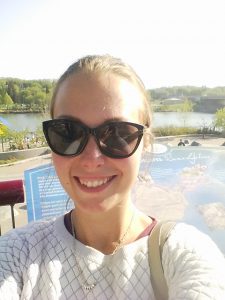 I began my PhD in 2010 with Dr Tony Gendall at La Trobe University, Melbourne. Tony’s group is using reverse genetics to investigate the physiological and cellular roles of two sodium/proton antiporters. These proteins affect cell differentiation and expansion, ro
I began my PhD in 2010 with Dr Tony Gendall at La Trobe University, Melbourne. Tony’s group is using reverse genetics to investigate the physiological and cellular roles of two sodium/proton antiporters. These proteins affect cell differentiation and expansion, ro
ot length and lateral root development as well as subcellular trafficking. In my thesis I described the expression patterns of these antiporters in Arabidopsis, and described their role in trafficking seed proteins to a specialised storage vacuole in developing embryos. I presented some this work at two ComBio meetings (2012 and 2014), as well as the International Conference for Arabidopsis Research (ICAR) in 2013, the Australian Research Assembly on Brassicas (ARAB) in 2014, and the Agriculture Bioscience International Conference in 2015. A chapter of my thesis was published in 2015 in the journal of Plant and Cell Physiology (Ashnest et al. 2015).
 Like many other PhD candidates, I began looking for a post doc fellowship about 6 months before submitting my thesis. I had applied for several advertised positions, but hadn’t been granted even an interview. Then in May of 2015, I met Dr Tim Sharbel at a free seminar at the AgriBio Systems Biology conference. Tim was in the process of moving his entire lab from Germany to Canada, and was recruiting post docs. Tim’s content and manner really impressed me, and when he mentioned that he was hiring, I decided on the spur of the moment that I would approach him about a job. I went to the ladies’ room and did the “power pose” for 2 minutes, then bravely walked up to Tim and introduced myself (he’s since told me that he had no idea how nervous I was…). We had a brief chat, and arranged to meet more comprehensively the next day. I remember going home and asking my husband, “how do you feel about Canada? Because I met this guy today…”
Like many other PhD candidates, I began looking for a post doc fellowship about 6 months before submitting my thesis. I had applied for several advertised positions, but hadn’t been granted even an interview. Then in May of 2015, I met Dr Tim Sharbel at a free seminar at the AgriBio Systems Biology conference. Tim was in the process of moving his entire lab from Germany to Canada, and was recruiting post docs. Tim’s content and manner really impressed me, and when he mentioned that he was hiring, I decided on the spur of the moment that I would approach him about a job. I went to the ladies’ room and did the “power pose” for 2 minutes, then bravely walked up to Tim and introduced myself (he’s since told me that he had no idea how nervous I was…). We had a brief chat, and arranged to meet more comprehensively the next day. I remember going home and asking my husband, “how do you feel about Canada? Because I met this guy today…”
 Tim and I chatted for about an hour the following morning. No pressure, I thought, but this is an interview! In the end it went really well; I had the skill set that Tim was looking for and we got along great. About a fortnight later, after Tim had read my CV and some positive emails from my referees, he offered me a job! There was a little more back and forth over contracts, and it took some time for us to arrange permits to work and live in Canada, and to pack up our home and all our things, but about 6 months later my husband, my cat and I were boarding a plane to Saskatoon. Now I’m living on the other side of the world, working with a wonderful team of people, and doing some really exciting science. I owe it all to the power pose and a moment of great bravery!
Tim and I chatted for about an hour the following morning. No pressure, I thought, but this is an interview! In the end it went really well; I had the skill set that Tim was looking for and we got along great. About a fortnight later, after Tim had read my CV and some positive emails from my referees, he offered me a job! There was a little more back and forth over contracts, and it took some time for us to arrange permits to work and live in Canada, and to pack up our home and all our things, but about 6 months later my husband, my cat and I were boarding a plane to Saskatoon. Now I’m living on the other side of the world, working with a wonderful team of people, and doing some really exciting science. I owe it all to the power pose and a moment of great bravery!
Author email: Dr Joanne Ernest < joanne.ernest@gifs.ca>
Advanced Greenhouse Research and Education Training Facility for Hawkesbury Institute for the Environment
12 August 2016
Greenhouse Research Education Training Facility

The world-class greenhouse facility, currently under development at the University’s Hawkesbury Campus, is a partnership between the University and Horticulture Innovation Australia (HIAL).
With a bold vision is to enhance national and international food security for an energy and water constrained future, this new facility will help Australian growers tap into the latest research and practices within greenhouse crop production to make their operations more efficient, and meet the increased demand for fresh food that can be delivered quickly to markets. The facility will have a strong education and training focus, working in partnership with industry partners to provide a student experience which produces career-ready graduates through involvement in engaged learning, projects and research in their studies.
Why is the Western Sydney University Greenhouse unique?
The Greenhouse RETF will enable unprecedented control of temperature, humidity, CO2 and light to deliver higher productivity while lowering energy and water inputs. Based on a design from the Wageningen University Research in The Netherlands, the Greenhouse will provide high levels of control over humidity, temperature, light and CO2. This facility – the first of its kind and scale in Australia – will allow researchers to test multiple conditions affecting the growth of plants in protected crop environments. The results of this research will be increased crop yields and lower costs to both the producers and the environment.
The Design
The nearest known equivalent greenhouse research facility is located in The Netherlands,at the Wageningen University Greenhouse Horticulture Research Institute (WUR). To ensure a state-of-the-art Facility design, Western Sydney University has partnered with experts from WUR, Dr JC (Sjaak) Bekker and Dr Silke Hemming, for consultation and advice as to the most appropriate design and construction for the University Greenhouse Research Education and Training Facility. This partnership with WUR creates an opportunity for Western Sydney University to position itself as a national leader in greenhouse horticulture research and education. This partnership will include staff and student exchanges, joint supervision of postgraduate research students, and assistance from WUR to develop training and education resource material.
The Industry Consulting Committee
The Greenhouse Research Education and Training Facility Industry Consultation Committee (ICC) provides strategic direction to the research and education programs, as well as providing input into the design phase of the Facility.
The ICC consists of eight to twelve members, including representatives from the two main stakeholder organisations (Western Sydney University and HIAL), influential leaders from tertiary education, vocation and training, government, business, communications and/or community sectors; who are committed to contributing to the Facility’s objectives. The ICC is Chaired by Mr Graeme Smith from Protected Cropping Australia.
Research Goals
- Interaction of plant sciences – engineering, economics
- Establish bench marks in productivity, water use, energy efficiency for key crops
- Investigate contrasting greenhouse covering materials on light, crop growth and energy balance
- Investigate potential of ‘closed’ systems on crop growth, temperature, CO2, water use and energy efficiency
- Integrated studies, analysis of overall system productivity, sustainability, efficiency.
The research team of Prof. David Tissue, Zhonghua Chen and Chris Cazzonelli are excited to drive new research areas to advance horticultural research within the Australian climate.
Training and Skill Development
The training of qualified, forward-thinking graduates is crucial to ensure that Australia has a bright future in the Agriculture sector. In collaboration with industry, the Western Sydney University Greenhouse RETF will provide a quality education program in the agriculture space.
Western Sydney University has committed to refresh and renew the way in which it offers and promotes ‘agriculture’ to provide a new, robust suite of agriculture and associated units, majors, sub majors, minors and courses that will offer students the opportunity to enter careers that meets global needs and student interest.
While the research program will generate new management practises and technologies, a training and education centre will also be established as part of the project to assist industry in building a future skilled workforce. The Greenhouse RETF will be an icon for peri-urban agriculture research, education and training at the University.
The research, education and training carried out at this facility is expected to result in a large number of partnership opportunities for UWS, resulting in collaborations with the protected cropping industry, TAFE, related government agencies and regional, national and international communities.
Email: David Thompson | Communications Officer
Hawkesbury Institute for the Environment
P: 0429 951 552 or 02 4570 1623
ComBio 2015- ASPS Travel Award Recipient Report
14 July 2016
By
Kathryn Dumschott
PhD Candidate, Centre for Carbon Water and Food, Faculty of Agriculture and Environment, University of Sydney
The ASPS travel award gave me the opportunity to present my research involving carbon accumulation and partitioning in the legume species Vicia faba (faba bean) at ComBio 2015. Legumes are vitally important for human nutrition and agricultural practices. As we face global population increases and the effects of climate change become evermore apparent, it is crucial to focus on improving legume tolerance to environmental stress. Plants rely on changes in metabolism and carbon allocation to adapt to and tolerate their changing environment. Understanding these responses on a physiological, chemical and molecular basis is crucial for developing improved breeding strategies. Being able to discuss my project provided me the opportunity to hone my presentation skills as well as share my research with the ComBio community. The diverse range and high quality of plant science research covered throughout ComBio2015 meant that every lecture and symposium was both unique and interesting. Overall, it was a great experience that broadened my view on all the research being done in Australia as well as in the international plant science community.
Contact: kathryn.dumschott@sydney.edu.au
On the Pulse – Legume Symposium in Celebration of the International Year of the Pulses
15 June 2016
ON THE PULSE – RESEARCH SYMPOSIUM 2016

2016 marks the United Nations Food and Agriculture Organization’s International Year of Pulses – a celebration of the importance of these legumes.
On Tuesday 12 July, the Faculty of Agriculture and Environment at the University of Sydney will host the 2016 Research Symposium, On the Pulse.
On the Pulse brings together domestic and international researchers to discuss strategies and advances that are future proofing pulse agriculture, focusing on three themes: pulse diversity, pulse benefits to agronomy and genetic pulse sustainability.
Download the Symposium program (PDF, 1.37MB)
Event details
Tuesday 12 July 2016
8.15am – 6.00pm
Veterinary Science Conference Centre
University of Sydney
Free Registration
For more information
Liz Kenna
+61 2 9351 5697
liz.kenna@sydney.edu.au sydney.edu.au/agriculture/outreach/symposium
Whole Plants: Representative update by Dr Andrew Merchant
08 June 2016
“The interaction between the different cell types of the plant are controlled through complex physical, chemical and environmental signals”
The first half of 2016 has been a busy time for the study of whole plants. Several teams of researchers across the country have been awarded funding for questions at the whole plant scale as well as some significant recognition to individuals in the field.
Congratulations to Professor Peter Waterhouse from the Queensland University of Technology for his Laureate Fellowship to investigate how plants distinguish between ‘self’ and ‘non-self’ genes. The implications for this research certainly have broad repercussions for plant scale research, particularly among agricultural efforts to improve crop production.
Many other researchers across the country have had significant success in securing research funding for plant scale research with some common themes emerging. Management of plants in urban landscapes has been recognised twice in this years ARC Linkage programs. Dr Jie Li and the team at RMIT are focused on the management of trees in suburban environments and the unique challenges faced by soil conditions in close proximity to building structures. Again with a focus on trees in urban landscapes, Dr Stephen Livesley and the team at the University of Melbourne are investigating the role that urban tree plantings have on biodiversity and strategically address the management challenges faced by local councils in maintaining them. Both of these projects reflect the increasing recognition that plants are a critical component for society outside of natural and food production systems.
Some of the most fundamental questions related to whole plant research pertain to the development of plant architecture. Professor John Bowman and the team at Monash University have secured ARC Discovery funding to investigate the development of plant architecture and how it is regulated. Also in the ARC Discovery scheme, Dr Gavin Flematti and the team at the University of Western Australia secured support to investigate the role of a yet to be characterised hormone in seed germination and seedling development whilst Dr Oliver van Aiken (also at the University of Western Australia) secured ARC Discovery funding to investigate the touch response in plants. Combined, these topics illustrate that there is still so much to learn about the fundamental nature of plants.
One of the most significant ways for researchers to develop their research activities is through the award of Discovery Early Career Researcher Award (DECRA) also from the ARC. These awards enable early career researchers to pursue questions and foster research programs with long lasting repercussions. This year we have three DECRA awardees in the field of plant science. Dr Simon Williams (Australian National University) is working on protecting wheat from necrotropic fungi, Dr Reena Narsai (LaTrobe University) is working to improve germination rates in cereals and Dr Stefane Wege (University of Adelaide) is investigating how plants acquire and cope with chloride. Congratulations to Simon, Reena and Stefane on their achievement. The scope of the projects no doubt reflects the importance of plant health to our environmental, economic and social welfare.
There are many events on the horizon for ‘whole plant’ scientists. One of the best places to check for upcoming events is the ASPS website under the ‘events’ tab (https://www.asps.org.au/events). Of particular note for whole plant research is the upcoming phenotyping workshop being held in Canberra from the 18th-23rd September. In recent years, advancements in high throughput phenotyping have been rapid and there is no better place to learn about these developments than this workshop.
Overseas there are many upcoming conferences as usual during the northern hemisphere summer period. Of particular note is the 17th International Photosynthesis conference held in Maastricht (Netherlands) this year from the 7th -12th August (http://www.ps2016.com). Also The European Plant Biology congress is in Prague (Czech Repuplic) from the 26-30th June (http://www.europlantbiology2016.org) with a great array of topics on the agenda. Every year the ASPS support numerous scientists to attend conferences such as these, particularly useful for those ECR and PhD students seeking to broaden their profile and make links with international researchers.
On a final note, please let me know of any major achievements by whole plant researchers that might otherwise go unrecognised. I am particularly interested in hearing from achievements by PhD or early career researchers that may not get recognition via the regular avenues. I would be delighted to help raise the profile of people (or teams) who are making major achievements across any aspect of ‘whole plant’ research.
Dr Andrew Merchant
Australian Research Council Future Fellow
Senior Lecturer in Plant Metabolism
Faculty of Agriculture and the Environment
University of Sydney
ASPS Travel Award Recipient Report
08 June 2016
By Belinda Worland
PhD Candidate in the School of Agriculture & Food Sciences at The University of Queensland
ComBio 2015 was the very first scientific conference I had attended since starting my PhD at The University of Queensland in early 2015. I was able to immerse myself for a week in a diversity of lectures and symposia covering topics of both general and specific interest related to plant biology. Two symposia in particular caught my attention. Both were on nitrogen nutrition and crop genetics focussing on maize. My undergraduate research and my PhD relate to nitrogen use in sorghum, a close relative of maize. I was familiar with the published work of Dr. Darren Plett and Dr. Julie Dechorgnat, however their research overview added a new depth of understanding that will facilitate my own discoveries. It was also exciting to see some very interesting unpublished research being presented. During the poster sessions and social events, I was able to meet these speakers and ask many questions while discussing their work. This is just one example of my ComBio 2016 experience I shared with fellow ASPS students. It was a great event to meet and interact with some of the people who have inspired and continue to motivate my own scientific interests and investigations.
For further information please email: belinda.worland@uqconnect.edu.au
ComBio2016 provisional symposium schedule
19 May 2016
|
ComBio2016: 3-7 October 2016 – Brisbane Convention & Exhibition Centre Dear Past and Present Members is now available and can be downloaded from http://www.asbmb.org.au/combio2016/symposia.html Overseas plenary speakers can be viewed at: http://www.asbmb.org.au/combio2016/plenary.html Most of the photographs and biographies of these prestigious scientists can now be viewed from this page. The latest advertisement for the conference which includes the overseas plenary speakers and the conference themes can be downloaded from: http://www.asbmb.org.au/combio2016/ – please see the bottom right hand side of this page. It is also available at: http://www.asbmb.org.au/combio2016/timetable.html Online registration and abstract submission is open and you can register at: Please note that you need to register prior to submitting your abstract. We have held blocks of well priced accommodation close to the Brisbane Convention Centre, and have recently secured two bedroom/two bathroom apartments at $268/night (only $67/night per person with four sharing the apartment). Details can be found at: http://www.asbmb.org.au/combio2016/accommodation.html Further information: Sally Jay: combio@asbmb.org.au |
ComBio 2015 Travel Grant Report by Millicent Smith
19 May 2016
PhD Candidate, Centre for Carbon Water and Food, Faculty of Agriculture and Environment
The University of Sydney
As an ASPS travel grant recipient I was able to attend ComBio 2015 to present research from a collaborative project between the University of Sydney and Forschungszentrum Jülich. The mobile nuclear magnetic resonance sensor (mNMR) recently developed at the Bio- and Geosciences Research Institute (IBG-2) at Forschungszentrum Jülich in Germany allows the non-invasive, real-time measurement of water status and dry matter accumulation during seed development. My PhD research focuses on the impact of drought and nutrient deficiency on photosynthetic capacity in common bean and the conversion of this energy into yield, particularly the nutritional quality of yield. Plant phenotyping technologies have an important role to play in this area and are evolving quickly to provide real time information about plant growth and development. It is an exciting field and it was great to share my research with the scientific community at ComBio.
The conference helped me improve my confidence and communication skills through having interesting discussions with other researchers about the future applications of the mNMR sensor technology. I am now determined to write up a manuscript sooner rather than later! Being exposed to a broad scope of research presented at COMBIO that is beyond what I would normally explore has made me excited about the possibilities awaiting me as a young member of the Australian plant science community. I am very grateful to the Australian Society of Plant Scientists for providing an opportunity to travel to ComBio in 2015.
C4 photosynthesis in a genus of succulents native to Australian salt lakes
11 May 2016
R.N. Robertson Travelling Fellowship Report by Nicole Dakin
(School of Chemistry and Biochemistry, University of Western Australia)
At first, you wouldn’t think there was much connection between a snow-covered forest in Germany, and a sunny salt lake in Australia. My PhD project investigates C4 photosynthesis in Tecticornia, a genus of succulents native to Australian salt lakes (Photo 1). Through the support of the R.N. Robertson Travelling Fellowship, I travelled to Mainz, Germany to complete part of my research, supervised by Dr. Gudrun Kadereit at the Johannes Gutenberg Universität Mainz.
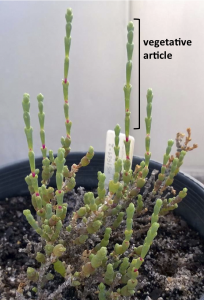 Photo 1: Tecticornia indica subsp. bidens, a C4 species. An example of a vegetative article is shown. Photo 1: Tecticornia indica subsp. bidens, a C4 species. An example of a vegetative article is shown. |
Tecticornia is a genus in the family Chenopodiaceae. These plants are halophytes, and the majority of species are endemic to Western Australia. Tecticornia species have highly reduced features, an adaptation to the harsh conditions in which they live. Their stems and leaves are fused into cylindrical structures called vegetative articles (see photograph included). Their flowers are embedded in these vegetative articles, with only the stamens visible. This leaves few morphological features to identify species, and discerning between species can be challenging. In addition, hybridisation and variation in ploidy levels are common. Previous phylogenetic studies have found low genetic diversity between species. The phylogeny of the genus remains unresolved, and the relationships among the species are not clear.
Tecticornia currently includes two C4 species and 39 C3 species. These C4 species among a large number of C3 species make it an interesting genus for studying the steps in the evolution of C4 photosynthesis. The evolution of C4 photosynthesis involves changes in anatomy, protein localisation, and expression, and my PhD project sets out to study these steps in Tecticornia. However, before these studies can be completed, the C3 species most closely related to the C4 species must be identified.
My aim during my time in Germany was to use the external transcribed spacer (ETS) region as a nuclear marker to construct a phylogeny of the genus. Previous studies have used chloroplast markers and the internal transcribed spacer region (ITS) marker, and information from the ETS marker would further contribute to resolving the phylogeny of the genus.
A question I was asked a lot was “Why would a Western Australian student, studying a Western Australian genus, come to Germany?” Members of the Kadereit lab (Photo 2) are experts in the family Chenopodiaceae, conducting studies into the phylogenetics, biogeography, anatomy, and taxonomy of a wide range of species in this family. Members of the lab have completed studies into particular genera, and broader-scale studies of the family, and have integrated these studies with their extensive knowledge of the biology of the plants.
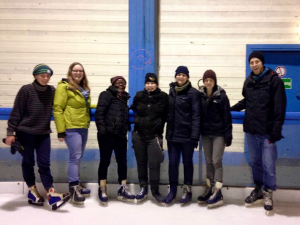
Photo 2: Ice-skating with Gudrun, and other students from the Kadereit lab. |
I learnt how to extract total DNA from dried herbarium tissue, amplify the ETS fragment, and determine sequences from over 70 samples. These sequences were aligned, and I was taught how to use various programs to construct phylogenetic trees. The phylogenetic reconstruction was a lot more challenging than first expected. The amplification of paralogous sequences caused unusual branch lengths in the first trees constructed, and conflict between trees using different markers. Some samples had to be repeated with different primer pairs to obtain the orthologous sequences. The amplification of paralogues is an unusual problem, and is thought to be due to recent hybridisation between species.
The ETS phylogeny, combined with the ITS marker, had greater resolution compared to previous studies. A number of well-supported clades could be seen, dividing the genus into groups. The position of the C4 species indicates they form a separate clade. The phylogeny revealed that the Tecticornia are a very young C4 lineage. A rapid diversification and hybridisation, as seen from the paralogous sequences, make it a challenging genus to fully resolve. The information from this phylogeny will help choose further markers to fully resolve the species relationships in the genus.
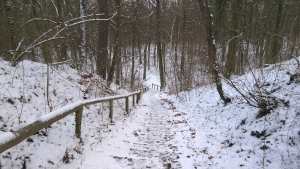
Photo 3. A snow-covered scene in the Lennebergwald forest, Mainz. |
I was also able to connect my findings with other studies. For example I was able to fit my phylogeny into a larger ETS phylogeny of a subfamily of Chenopodiaceae. My study, as well as increasing knowledge of Tecticornia, will also be valuable in resolving relationships across the whole family. I also picked up skills in hydrating dry herbarium material, and sectioning it to look at the anatomy; a difficult task for succulent tissue.
I used my free time to explore the city of Mainz. There was a beautiful forest close to where I was staying (Photo 3), and many museums and historical sites (Photo 4). Mainz, located on the Rhine River, has a rich history, and is the birthplace of Johannes Gutenberg, inventor of the first printing press.
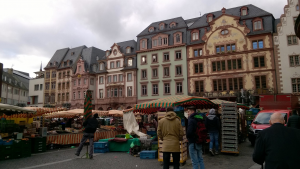 Photo 4. Exploring the markets in the centre of Mainz. Photo 4. Exploring the markets in the centre of Mainz. |
Thank you to Gudrun Kadereit for her mentorship and teaching, and thank you to my other supervisors: Martha Ludwig from the University of Western Australia, and Kelly Shepherd, and Terry MacFarlane from the Western Australian Herbarium. Thank you to Silvia Wienken and Max Lauterbach, and the members of the Kadereit lab who gave me advice and help during my stay: Michael Pirie, Uschi Martine, Katherina Bohley, and Denise Schmidt. And thank you to the ASPS for the honour of receiving the R.N. Robertson Travelling Fellowship, and allowing me to undertake this research.
Email: nicole.dakin@research.uwa.edu.au
Characterisation of the low affinity ammonium transporters in maize
01 May 2016
by Wending Li
ASPS Travel Awards Recipients for ComBio2015
PhD candidate, Centre for Carbon, Water and Food, Faculty of Agriculture and Environment, The University of Sydney
My research focuses on understanding ammonium transport in maize. In agricultural plant production, nitrogen fertilisers are used widely where ~1011 kg of nitrogen fertilizers are used annualy (Glass, 2003). The cultivation of cereals (wheat, maize, barley, rice) requires a significant amount of nitrogen fertiliser. Unfortunately, cereal N fertiliser use is poor, where only 30-50% of the total N applied is actually used for the production of the final grain yield (Raun and Johnson, 1999; Tilman et al., 2002). Low nitrogen use efficiencies can result in the loss of nitrogen into the environment, which causes water and soil pollution as well as greenhouse gas production (Masclaux-Daubresse et al., 2010). In addition, the waste of nitrogen fertilizers also gives rise to financial losses to the farmers, a significant cost in the production cycle. Therefore, improving plant nitrogen use efficiency (NUE) is an important strategy to overcome many of these constraints. One direction in enhancing NUE in plants is to increase the efficiency of root N transport processes. This includes, the proteins involved in the uptake of nitrogen from the soil as well as the internal storage and redistribution of nitrogen required to support growth and final seed yield and quality (Garnett et al., 2009).
Ammonium is a major form of nitrogen absorbed by plants and can be redistributed through high and low affinity pathways. The physiological and molecular activities of high-affinity ammonium transporters have been examined in numerous plant species, which belong to the AMT/MEP/Rhesus superfamily. Conversely, molecular information about low-affinity ammonium transport systems remains limited. Recently, our lab has discovered a new family of low affinity ammonium transport proteins called AMF1 (ammonium facilitator 1) (Chiasson et al., 2014). Through sequence homology, we found two AMF1 homologs in maize, which are ZmAMF1;1 and ZmAMF1;2. I have been investigating the function of these two genes in maize as well as using heterologous expression systems (yeast and Xenopus laevis oocytes) to define their functional relevance in nitrogen transport and overall plant growth. In maize, I’ve observed ZmAMF1 is induced by nitrogen starvation in roots, while both ZmAMF1 and ZmAMF2 are preferentially expressed in the shoots. The cellular location of both genes is currently being identified using a native promoter::GUS fusion construct transformed into the dwarf maize inbred line Gaspe. I have undertaken a reverse genetics approach in maize using a collection of Mu transposon insertion lines within exon and promoter loci of either ZmAMF1 or ZmAMF2 (provided by B. Meeley, DuPont Pioneer). We have progressed the transposon lines through a series of backcrosses to B73 and Gaspe using a diagnostic PCR screening assay. Mutant plants containing perturbations in ammonium transport in maize are undergoing characterisation. This project will contribute to a better understanding of the role AMF1 proteins in plant N transport and metabolism, including their role as low-affinity ammonium transporters. Our research will improve our understanding of nitrogen uptake and redistribution in plants, whiles also establishing new strategies to improve nitrogen use efficiency, plant growth and development.
Reference:
Chiasson DM, Loughlin PC, Mazurkiewicz D, Mohammadidehcheshmeh M, Fedorova EE, Okamoto M, McLean E, Glass AD, Smith SE, Bisseling T (2014) Soybean SAT1 (Symbiotic Ammonium Transporter 1) encodes a bHLH transcription factor involved in nodule growth and NH4+ transport. Proceedings of the National Academy of Sciences 111: 4814-4819
Garnett T, Conn V, Kaiser BN (2009) Root based approaches to improving nitrogen use efficiency in plants. Plant, cell & environment 32: 1272-1283
Glass AD (2003) Nitrogen use efficiency of crop plants: physiological constraints upon nitrogen absorption. Critical Reviews in Plant Sciences 22: 453-470
Masclaux-Daubresse C, Daniel-Vedele F, Dechorgnat J, Chardon F, Gaufichon L, Suzuki A (2010) Nitrogen uptake, assimilation and remobilization in plants: challenges for sustainable and productive agriculture. Annals of Botany 105: 1141-1157
Raun WR, Johnson GV (1999) Improving nitrogen use efficiency for cereal production. Agronomy Journal 91: 357-363
Tilman D, Cassman KG, Matson PA, Naylor R, Polasky S (2002) Agricultural sustainability and intensive production practices. Nature 418: 671-677
Recent Posts
Tags
Archives
- June 2025
- May 2025
- April 2025
- March 2025
- February 2025
- January 2025
- December 2024
- November 2024
- October 2024
- September 2024
- August 2024
- July 2024
- June 2024
- May 2024
- April 2024
- February 2024
- January 2024
- November 2023
- October 2023
- September 2023
- August 2023
- July 2023
- June 2023
- May 2023
- April 2023
- March 2023
- February 2023
- December 2022
- November 2022
- October 2022
- September 2022
- August 2022
- July 2022
- June 2022
- May 2022
- April 2022
- March 2022
- February 2022
- January 2022
- December 2021
- November 2021
- October 2021
- September 2021
- August 2021
- July 2021
- June 2021
- April 2021
- March 2021
- February 2021
- January 2021
- December 2020
- November 2020
- October 2020
- September 2020
- August 2020
- July 2020
- June 2020
- May 2020
- April 2020
- March 2020
- February 2020
- January 2020
- December 2019
- November 2019
- October 2019
- September 2019
- August 2019
- July 2019
- June 2019
- May 2019
- April 2019
- March 2019
- February 2019
- January 2019
- December 2018
- November 2018
- October 2018
- September 2018
- August 2018
- July 2018
- June 2018
- May 2018
- April 2018
- March 2018
- February 2018
- January 2018
- December 2017
- November 2017
- October 2017
- September 2017
- August 2017
- July 2017
- June 2017
- May 2017
- April 2017
- March 2017
- February 2017
- January 2017
- December 2016
- November 2016
- October 2016
- September 2016
- August 2016
- July 2016
- June 2016
- May 2016
- April 2016
- March 2016
- February 2016
- January 2016
- December 2015
- November 2015
- October 2015
- September 2015
- August 2015
- July 2015
- June 2015
- May 2015
- April 2015
- March 2015
- February 2015
- January 2015
- December 2014
- November 2014
- October 2014
- September 2014
- August 2014
- July 2014
- June 2014
Copyright 2017 Australian Society of Plant Scientists Disclaimer & Privacy
Website by Michael Major Media
